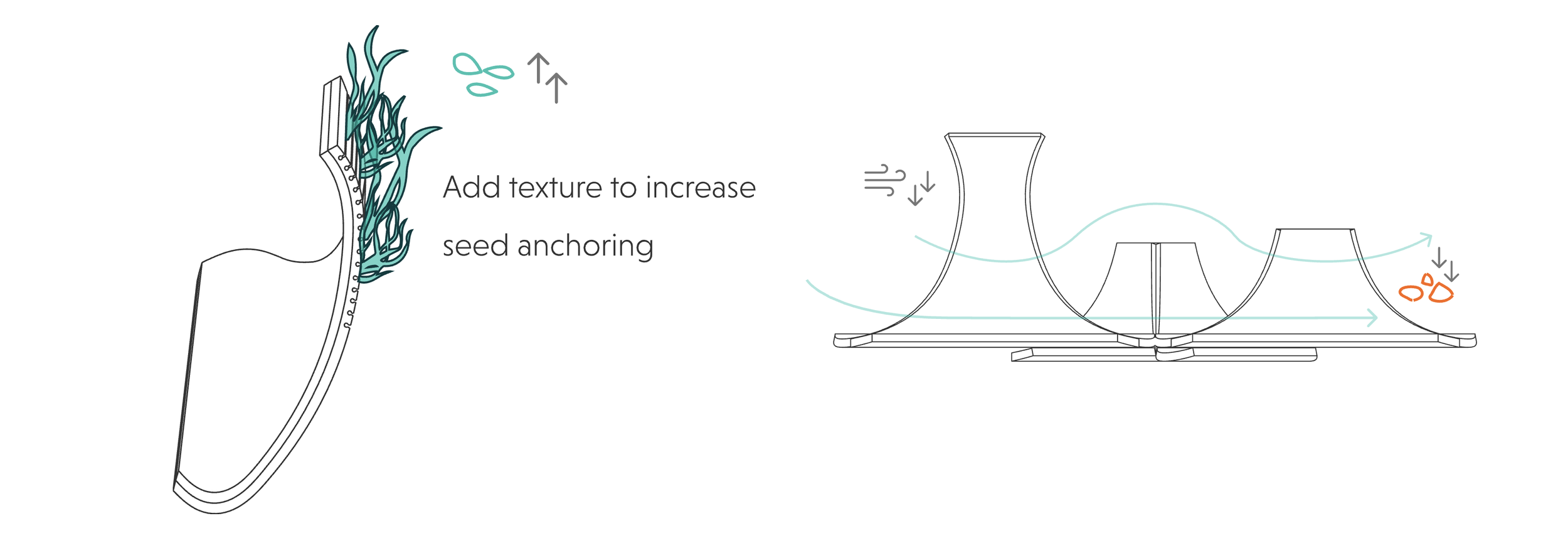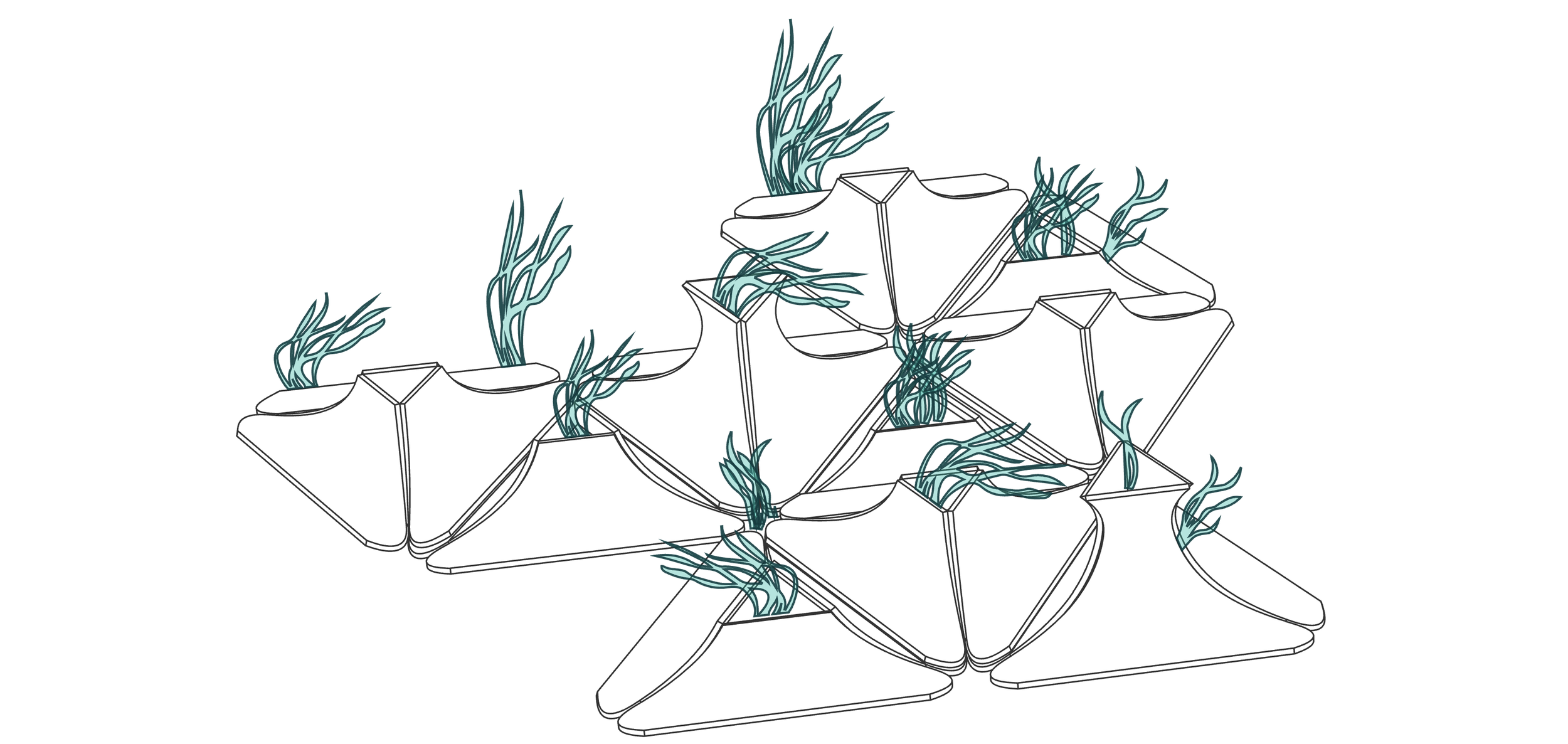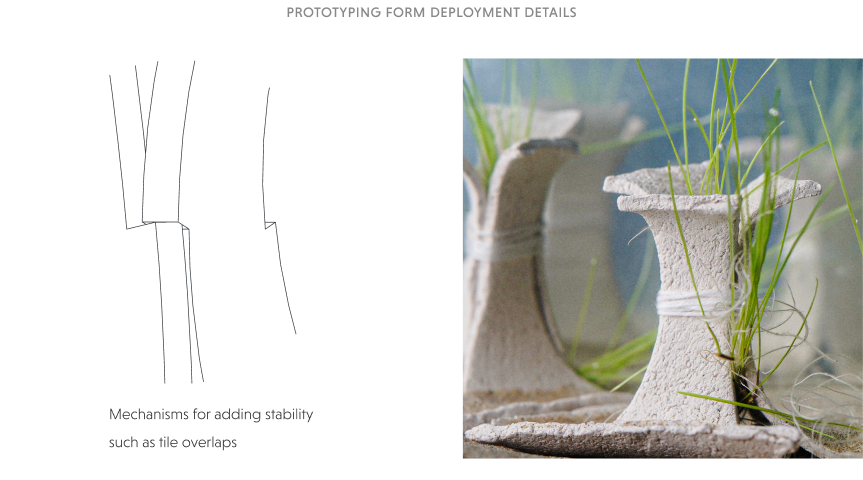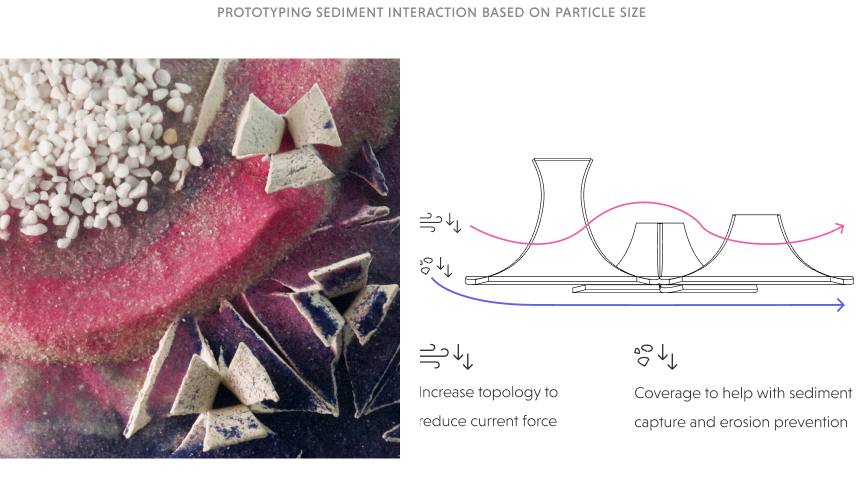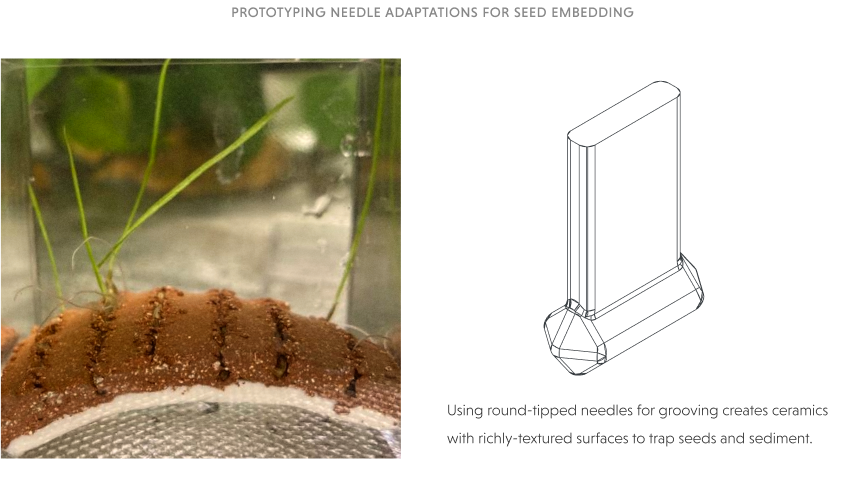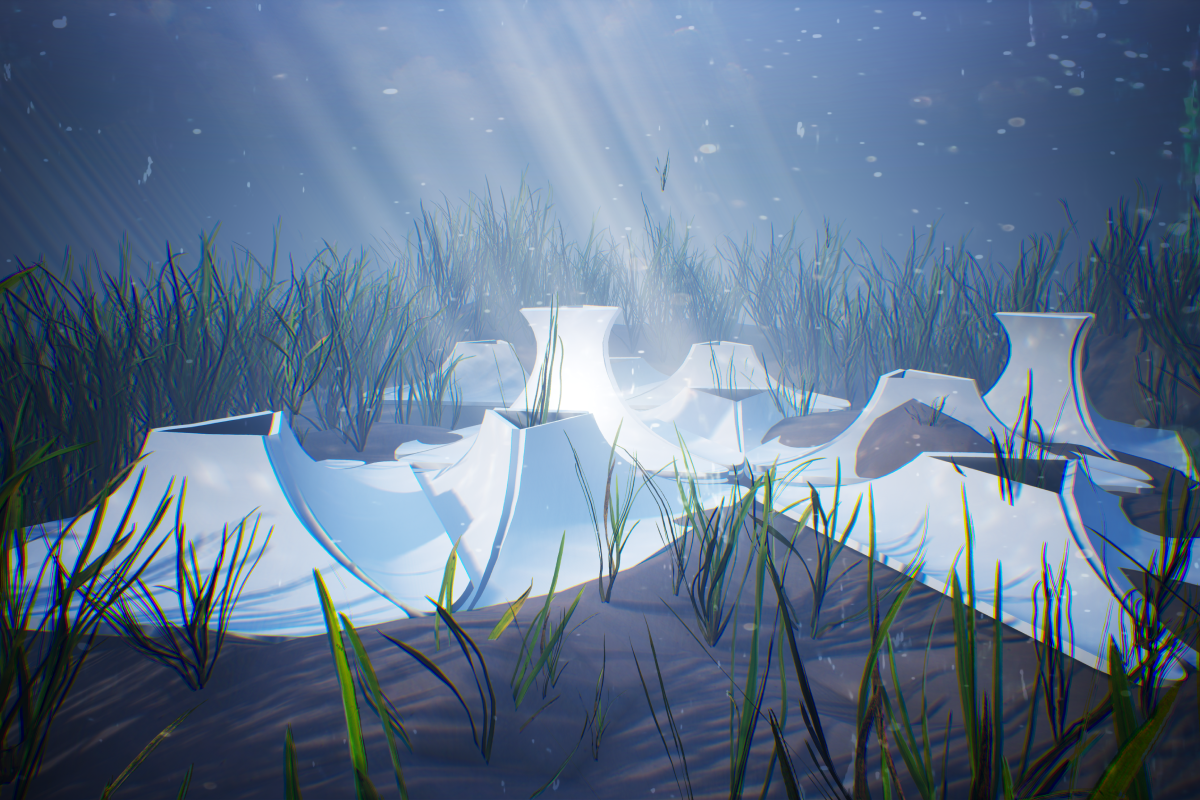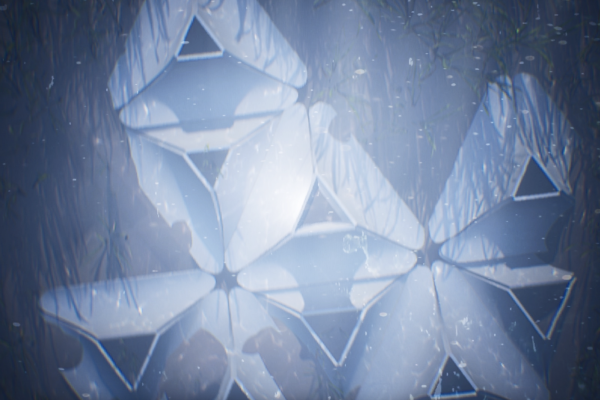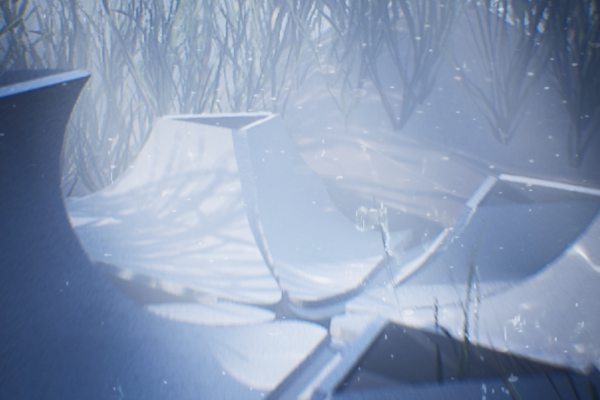Blue Ceramics: Co-designing Morphing Ceramics for Seagrass Meadow Restoration
Blue Ceramics is a modular system of 4D printed ceramic tiles for restoring seagrass meadow ecosystems. Seagrass meadows are twice as efficient as forests at capturing and storing carbon, but over the last two decades they have been increasingly disappearing.
A key challenge in seagrass restoration is the lack of conservation tools for experts and scientists. I led a team of industrial and computational designers in collaboration with marine scientists to co-design an intervention strategy for seagrass meadow restoration efforts. We developed a smart material using ceramics and 4D printing methods.
We're trying to work with a marine scientist to field test the intervention off the North Carolina coast in the near future.
When a seagrass meadow system starts to decline, it usually happens in small patches releasing sediment and seeds --making the water cloudy. These are known as “cold-spots” and decrease meadow resiliency causing habitat loss.
Blue Ceramics design targets cold-spots at different levels to reduce erosion and seed loss through sediment traps. The overall system is designed to increase seagrass meadow resiliency at different levels of scale to aid rehabilitation efforts.
We started prototyping with hand-building and grooving before moving to 3D printing and CNC grooving. Generating hundreds of test tiles, we methodically tested and refined the methods for fabricating morphing ceramics.
We built an environmental simulation in Unreal to prototype the deployment of the intervention —conveying the intervention goals, and form details to scientists, designers, and the general public.
As for the next step:
Field Testing — initial testing will focus on mapping sediment interaction with the form and its effect on seagrass (zostera marina) regrowth and seed retention off the coast of North Carolina.
Manufacturing — developing a digitally controlled subtractive manufacturing method for scaling the manufacturing process



